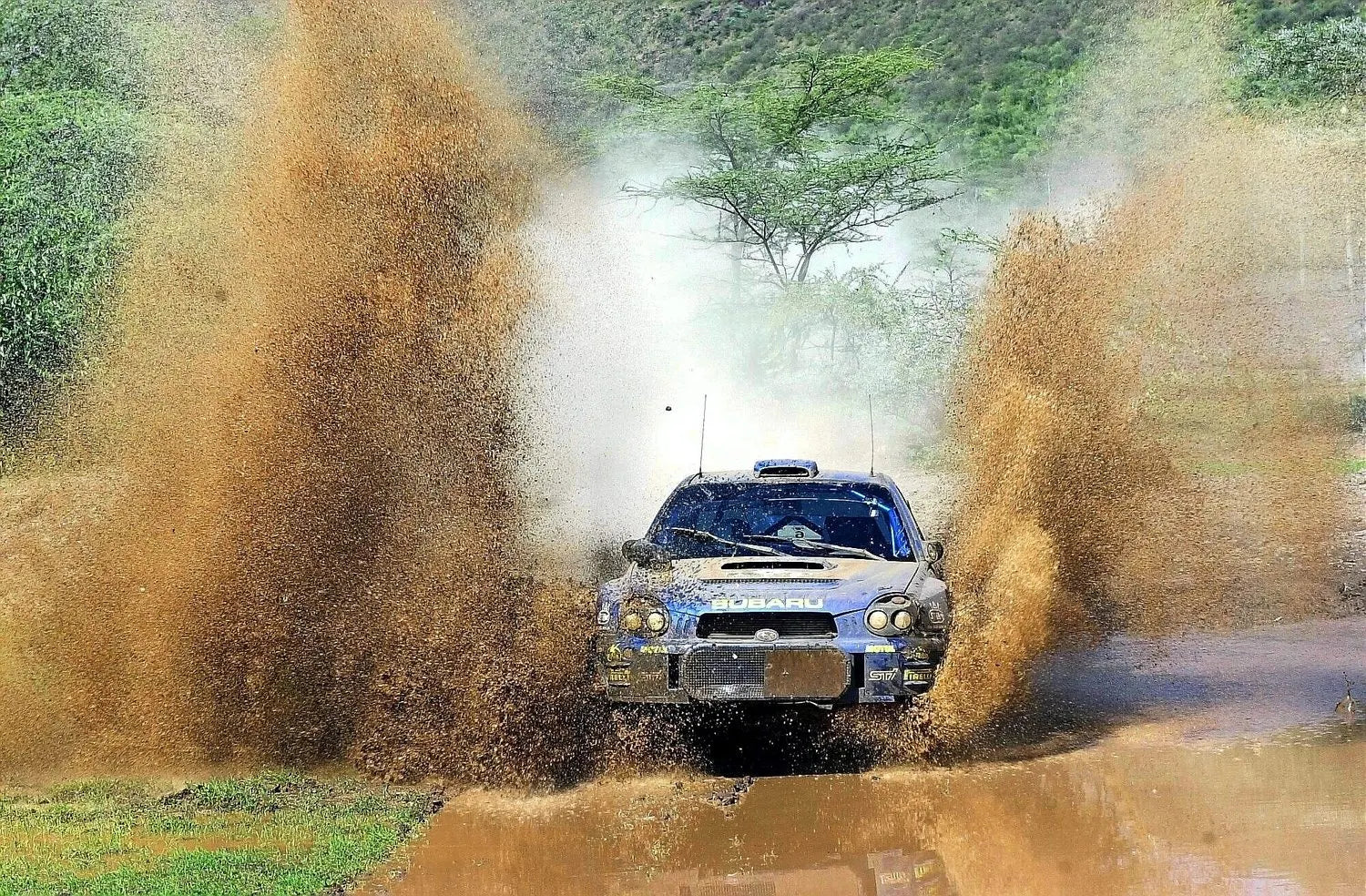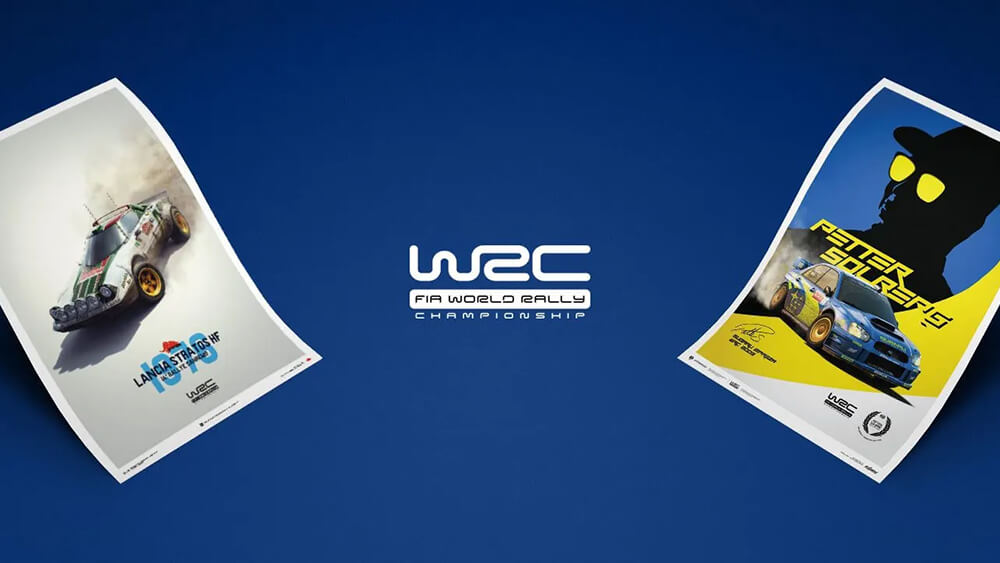Automobilist announces an exciting new collaboration with WRC, the FIA World Rally Championship, which will see us produce posters telling the tale of the battle for the manufacturer’s title in a run up to the 50th anniversary of the birth of the WRC back in 1973. With WRC's support, several of the rally collection design posters now carry an upgraded look and are available for fans of one of the most thrilling motorsport format.
But enough about us.
To get you in the mood, let’s kick off with a tale of one of the most famous events in world rallying, which will make a long-awaited comeback to the WRC calendar next year, the totally unique Safari Rally.
Due to take place from 16 to 19 July 2020, the Safari Rally Kenya was to make a very welcome return to the World Rally Championship calendar for the first time in 18 years, but unfortunately, Covid 19 put paid to that and we will have to wait until 2021 for this most famous of events to be run once more. Rallying generates an enthusiastic following around the world, with events drawing large crowds of spectators. In terms of global appeal, going back to the earliest days of the sport, only the Monte Carlo Rally and what was then called the East African Safari Rally can claim to have had truly international appeal and to have generated interest outside of the motor sport fraternity.
Rallying’s elephant in the room…or possibly on the road
The very first Safari was run in 1953, as a celebration of the coronation of Queen Elizabeth II and was therefore called the East African Coronation Safari. Effectively it was a race on public roads, open to other traffic, starting in Nairobi, passing Lake Victoria, running through Uganda and Tanganyika (now Tanzania) and back to Nairobi.

In its infancy, the event was dominated by local drivers, with little interest from European teams. However, over time, the major motor manufacturers saw the marketing and publicity benefits of claiming that their car had stood up to the worst that the African continent could throw at it and gradually the rally grew in stature.
Such was the specialist nature of the event, that European car companies would be quite happy to send cars and equipment to the event and let the local importers run the rally for them. With incredibly harsh conditions, flooded rivers to ford and the rockiest roads on the calendar, it also meant that your European rally rocket was not best suited to this marathon event that would often cover 6000 kilometres. Therefore cars like the Peugeot 404 and 504 solid, strong but slow when compared to those used on more conventional terrain, often won the event and even Mercedes, not exactly famous for their rally success, were first past the flag on a few occasions.

The European breakthrough came in 1972 when Hannu Mikkola and Gunnar Palm became the first non-African crew to win the event, at the wheel of a Ford Escort RS 1600, much modified from its European rallying cousin. The appeal of its event was the fact that simply getting to the finish was an achievement, one of that often relied on finding local help in a village en route when stuck in mud or down a drop and it was therefore a complete contrast to controlling what was effectively a two seater racing car on the tarmac of Corsica or the ice of Monte Carlo. Even when the Safari finally had to conform to world rally championship rules and adopt the special stage format in 1996, rather than just using roads open to the public it still fostered that spirit of adventure that was beginning to be regulated against in the short three day format that is the norm in modern rallying. . From 1966 to 2002, it regularly included over 1000 kilometres of timed special stages, around twice that of a more normal rally.
The challenge of the Safari really was unique, with huge holes in the roads that you could lose a car in, to choking red dust, traffic coming towards you on the open roads and even some of Africa’s famous wildlife with elephants and giraffes a common hazard!

Mikkola opened the floodgates with his win and several of the big beasts of world rallying would follow his example: Anderson, Waldegard, Nicolas, Kankkunen, Sainz, Makinen, McRae and Burns to name but a few, but the man who holds the record for the most wins was Ugandan-born Kenyan Chandrashekhar Mehta. “Shekhar” as he was known stood on the top step of the Safari podium no fewer than five times, four of those wins being consecutive from 1979 to ’82.

There’s no doubt that next year’s Safari Rally Kenya will not be quite as wild and dangerous as in past years. It will have to conform to the norms and regulations that are common to all rounds of the World Rally Championship. But you can be sure that it will throw up the type of challenge the competitors won’t encounter at any other round of the series.

Images courtesy Motorsport Images / Jaanus Ree / Red Bull Content Pool














































